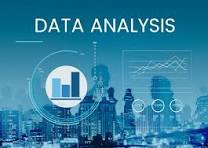10 Powerful Tools for Data Analysis

What Is Data Analysis
Data analysis is at the heart of informed decision-making in various fields, from business to research. Whether you’re a seasoned data scientist or just starting your analytical journey, having the right tools can significantly impact your productivity and insights. In this article, we’ll explore ten powerful tools that empower you to extract valuable information from data, visualize trends, and draw meaningful conclusions. now let explore the 10 powerful tool needed for data analysis
1. Microsoft Excel
Microsoft Excel remains a staple for data wrangling, reporting, and basic analysis. Its pivot tables, functions, and add-ins make it a versatile choice for organizing and summarizing data. However, Excel may struggle with large datasets and lacks advanced statistical capabilities.
2. Python
Python’s popularity in data science continues to soar. Its rich ecosystem of libraries (such as Pandas, NumPy, and Matplotlib) allows for data manipulation, visualization, and machine learning. Jupyter Notebooks provide an interactive environment for code execution and documentation.
3. R
R, a statistical programming language, excels in statistical modeling and data visualization. Its packages (like ggplot2 and dplyr) cater to researchers and analysts working with complex datasets.
4. Apache Spark
For big data processing, Apache Spark offers scalability and in-memory computation. Spark SQL, MLlib, and GraphX enable distributed analytics and machine learning.
5. Google Cloud AutoML
Google Cloud AutoML simplifies machine learning model building. No coding required—just upload your data and let AutoML create custom models for tasks like image recognition.
6. SAS
this software is an enterprise-grade analytics system, provides advanced statistical analysis and business intelligence. SAS Studio and Enterprise Miner are powerful tools for data professionals.
7. Microsoft Power BI
Microsoft Power BI focuses on data visualization and interactive dashboards. Its DAX language and drag-and-drop interface make it accessible for business users.
8. Tableau
Tableau’s intuitive interface allows users to create stunning visualizations and storytelling dashboards. It’s a favorite among data analysts and business professionals.
9. KNIME
KNIME, an open-source analytics platform, offers modular workflows and data blending capabilities. It’s extensible and suitable for diverse tasks.
Conclusion
In conclusion: Remember that your specific needs and skills matter. Explore these tools and find what aligns with your goals. Whether you’re crunching numbers, building models, or creating compelling visuals, the right tool can transform your data analysis journey.

